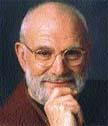
Dr. Oliver Sacks (Public Affairs)
Dr. Oliver Sacks’ work exemplifies the idea that truth is not only stranger than fiction but also far more interesting.His books shed light on common beliefs about identity, feeling, intellect, knowledge, and perception. As a neurologist and author, he has combined his medical practice with a talent for teaching and telling the stories of his patients.
This Thursday, Nov. 14, at 11:10 a.m. Sacks will give a convocation in Memorial Chapel. The lecture is entitled “Creativity and the Brain,” and will be immediately followed by a question and answer session.
Most people know Sacks’ work, whether they realize it or not, from some of the many fictional works based on his writings. He is probably one of the few authors of non-fiction whose work frequently has been mined by artists such as opera composers, playwrights, and filmmakers.
One of Sacks’ most well known books may be the story dramatized in the 1990 film Awakenings. In the film, Robin Williams plays the role of Dr. Sayer (Sacks), while Robert De Niro plays one of Dr. Sayer’s patients with Parkinson’s disease. The outlandishly energizing effects of an experimental drug called L-dopa lead to dramatic changes in the patients’ quality of life.
So far, at least three plays, two films, and an opera have been written based on his work. The film Awakenings is the cinematic version of a play by Harold Pinter based on Sacks’ actual accounts in his 1973 book of the same name. His book The Man Who Mistook his Wife for a Hat has also received numerous artistic treatments.
Lawrence audiences may remember the Guthrie Theater production in Stansbury of Brian Friel’s Molly Sweeney. The story about a woman who becomes able to see after years of blindness took inspiration from Sacks’ case study “To See or Not to See.”
The same story, which is included in his book An Anthropologist on Mars, also provided the basis for the 1999 film At First Sight.
What makes Sacks’ writing as compelling as any fiction is the way he approaches both his patients and the telling of their stories. Aleksandr Luria, a Russian neurologist and Sacks’ longtime mentor, called it “romantic science,” where clinical precision combines with a humane approach.
Luria said that the act of recovering one’s own identity is itself healing, and Sacks has certainly taken that to heart.
In the past, critics have called Sacks a kind of voyeur or freak show announcer who uses his patients’ stories as source material. Others view his work as acknowledging the human urge to stare but attempting to direct that urge toward some kind of sympathetic understanding.
The difference between the majority of neurological writing and Sacks’ work lies in a different concern for the situation of the patient. While most medical writing concentrates on the disease and how the patient became sick, romantic science, as Luria described it, focuses on how the patient gets well, or at least learns to deal with a new state of life. He has described what he does as “neuroanthropology.”
Sacks’ work has also helped spread awareness of a number of neurological conditions. Disorders such as Tourette’s syndrome and autism, which today are commonly diagnosed and widely discussed, were relatively obscure and poorly defined in the early part of the 20th century and even in the 1960s and 1970s. Both are conditions about which Sacks has written extensively.
Sacks’ own background is as diverse as those of his patients. As a boy, he grew up in North London with parents who were both doctors. At an early age, he developed many loves, including chemistry, botany, music, and writing. The effects that his intense, perception-altering migraines had on him provided a doorway into neurology. He wrote his first book in 1970 on the subject.
Sacks, from the start, cultivated a career that married writing and science. As a young man, he became friends with the poet W. H. Auden, and in 1960 he moved to San Francisco to take a medical internship, largely because he wanted to work with the poet Thom Gunn. The New York Times has referred to Sacks as “the poet laureate of medicine.”
In his two most recent books, Uncle Tungsten: Memories of a Chemical Boyhood (2001) and Oaxaca Journal (2002), Sacks turns his attention to his own interests in chemistry and botany, respectively.
With a lifetime of experiences that any true liberal arts student would aspire to, Sacks has held posts as wide-ranging as clinical professor of neurology at the Albert Einstein College of Medicine, honorary fellow of the Academy of Arts and Letters, a 1989 Guggenheim fellowship.
He has held a position as the consulting physician for both the Little Sisters of the Poor in New York (currently) and the Hell’s Angels in California (formerly).
By studying the life of the brain, Sacks has opened up people’s minds to the countless different facets of existence.
The convocation, the third of the 2002-2003 season, is free and open to the public.
